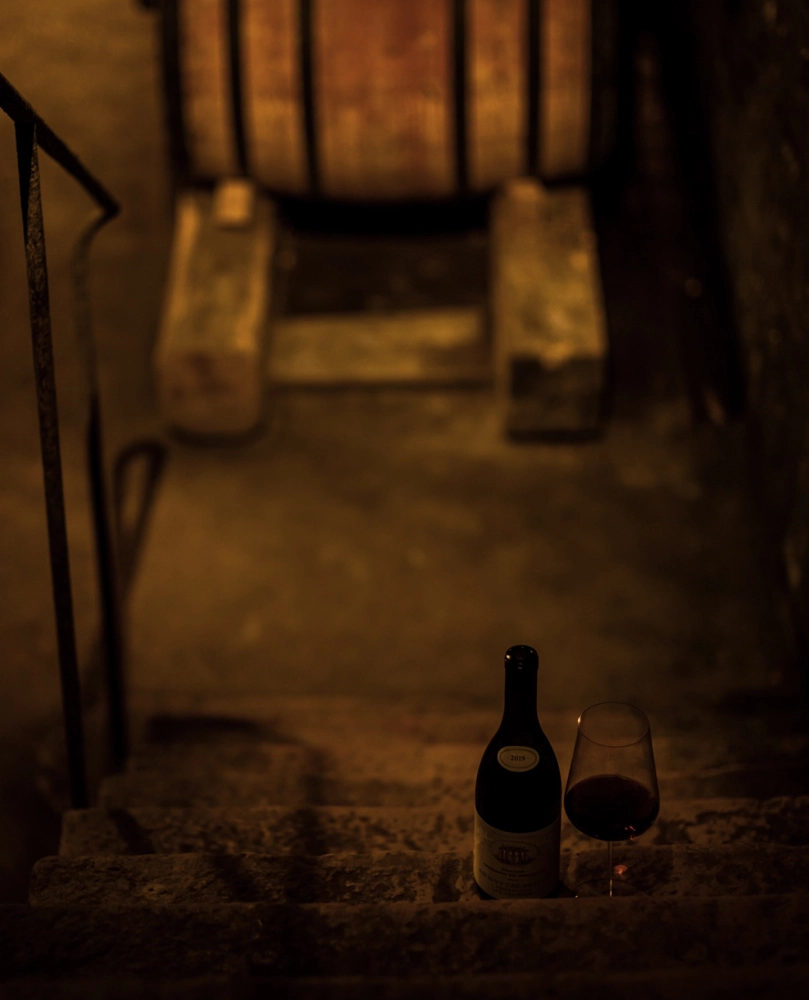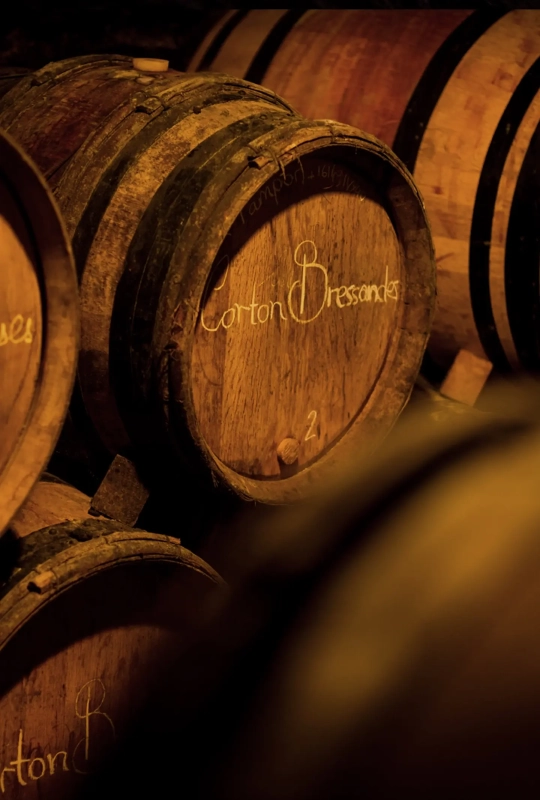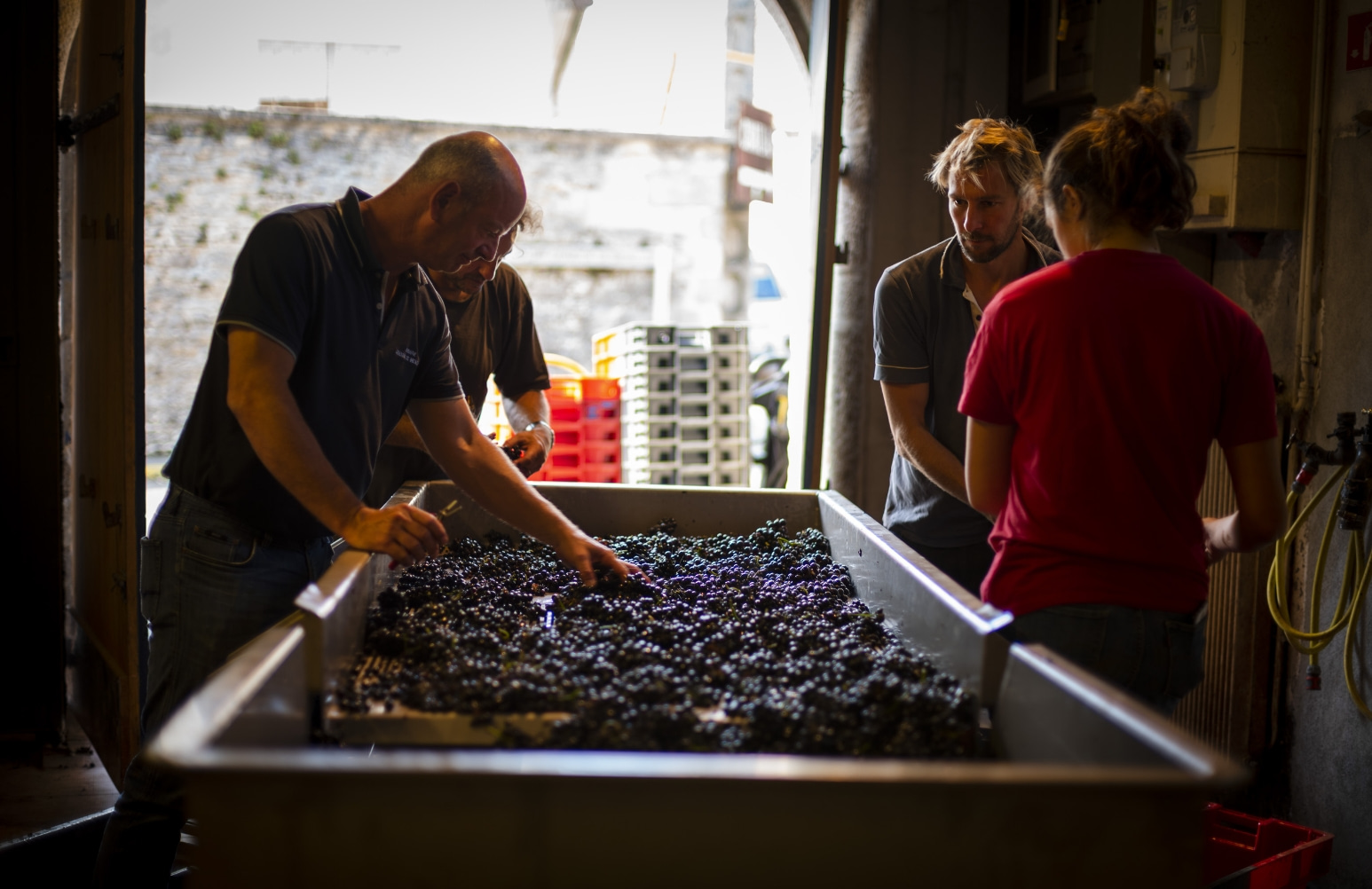

A family property since 1834, Domaine Chandon de Briailles is now run by brother-sister duo Claude and François de Nicolay. In 2005, they decided to switch from organic to biodynamic viticulture. The 12 crus are spread across the communes of Savigny-Lès-Beaune, Pernand-Vergelesses and Aloxe-Corton.
When Nadine de Nicolay joined the estate in the early 80s, she quickly realised the harmful effects of chemical cultivation. A woman of vision, she decided to go back to the old recipes of Bordeaux mixture and soil cultivation - no more chemical treatments or weedkillers.
On the road to naturalness, the steps
En 2001
François de Nicolay took over from his mother with his sister Claude. A few years' experience in Paris as a wine merchant and distributor enabled him to witness the transformation of the wines of certain Domaines that had converted to biodynamic viticulture. He quickly realised the high quality of the wines produced using this method and decided to convert the family estate.
Since 2005
The Domaine cultivates its 13.7 hectares biodynamically and obtained Demeter certification in 2011.
Since 2011
We are gradually introducing draught horses to replace tractors. As far as treatments are concerned, we have abandoned the use of sulphur (against odïum) and replaced it with skimmed milk, an old market gardening recipe that works perfectly.


To make fine wines, and even more so if you want to push the potential of each climate to its zenith and make great wines, you need good grapes, top quality grapes that will transmit all their energy and identity to the final wine.
To make fine wines, and even more so if the ambition is to push the potential of each climate to its zenith and make great wines, you need good grapes, grapes of the highest quality that will transmit the maximum of their energy and identity to the final wine.
At first sight, the idea seems obvious, almost simplistic, but it involves more than just basic care: it involves decisions and a course of action.
Our mother, who preceded us in running the estate, had already banned the use of synthetic molecules back in 1989. She paved the way, and in 2005 we children decided to convert to biodynamic viticulture on the estate's 14 hectares, and in 2011 we obtained Demeter certification.
For us, the work in the vineyard is artisanal, meaning that by definition it is carried out exclusively by man. It's the work of a goldsmith, whose main fuel is elbow grease. We have reversed the historical process of intensive agriculture, replacing agricultural machinery with horses, and the needs and treatment of plant diseases and risks are the result of meticulous attention and observation of the vine and its ecosystem, by human beings, in this case a committed and motivated team of women and men at the service of each vine, like so many qualified nursery nurses in a nursery.
In practice, we employ one person per hectare and the soil is worked exclusively by our four horses, Diva, Epi, Farandole and Gipsy. Not forgetting the manual work carried out by Samuel, Adrien, Hugo, Bénilde, Pascale, Arnaud, Jérôme, James and Paul, not forgetting the trainees and apprentices who do the pruning, disbudding, digging up young plants, repairs, transplanting, etc. We sold our last tractor and now spray all the treatments using light caterpillars, which don't compact the soil. When the soil is not compacted by the machines, it becomes permeable, allowing water to infiltrate deeply and considerably limiting the effect of erosion. This also leads to the vines rooting downwards, encouraging the exponential development of mycorrhizae on the rootlets and further down. These mycorrhizae work a bit like sponges, capturing water and then returning it to the plant roots. The captured water contains many minerals that give the grapes, and therefore the wine, a great deal of flavour.
You have to listen to nature and use the right techniques to get the best out of it. We have the privilege of cultivating exceptional terroirs, and we must do our utmost to ensure the quality of our wines and the preservation of our environment.
Beyond the strict expression of the climates, we also seek charm, finesse and tenderness in our wines, whatever their age.
No added sulphites are used during vinification, and the grapes are harvested whole, except in years of frost or hail. It takes place in oak truncated-cone vats and lasts around 15 days, with a few gravity pump-overs and punchings of the cap.
The Chardonnay grapes are crushed by hand before being pressed vertically. The musts are then cooled and decanted into stainless steel vats. After a night or two, the must is transferred to 10 hectolitre tuns for cellaring, without the addition of sulphites. Fermentation takes place gently at low temperature, and can last from two months to two years, depending on the vintage. Ageing continues naturally in the same containers, on the lees, for 20 to 28 months. Once again, it's the wine that guides us, not the other way round. Once they are ready for bottling, the wines are pumped back into stainless steel vats using inert gas pressure (nitrogen or Co²). Some cuvées will need a very slight addition of sulphites, while others will not. The wine is then left to rest for one to two months before bottling, which takes place on the estate, using a bottling line of the highest quality. All this attention to detail ensures that the wine stays alive and expresses the characteristics of its original climate to the full. Freshness and minerality are preserved.
Once the wine has been decanted, it is transferred to barrels in the old cellars for maturing on its lees for 14 to 20 months in 228-litre barrels (a Burgundy tradition) without racking or adding sulphites. The proportion of new barrels varies, from 0 to 15%. The wines are then pumped over cuvée by cuvée in stainless steel vats, using only inert gas pressure and no pumps. Some cuvées require a small addition of sulphites, others do not. The wine is then left to rest for one to two months, before bottling, which takes place at the Domaine, using a bottling line of the highest quality. All this attention to detail ensures that the wine stays alive and expresses the characteristics of its original climate to the full. Freshness and minerality are preserved.


Once the wines are dry, they descend by gravity into the cellar without the addition of sulphites. They are then matured in Burgundy barrels on their lees for around 18 months for the reds and 24 to 30 months for the whites.
In the magnificent 12th or 13th century cellars, built by the brilliant monks of Citeaux Abbey, the wines mature in a very calm atmosphere, far from the turmoil of our lives. In this environment, the natural hygrometry, temperature and ventilation are perfect throughout the seasons. After this period, the wines are gently racked using inert gas pressure (so as not to use a pump) and then pumped back into the blending vats. About a month later, when the wine is bottled, some of the cuvées will be lightly sulphured, others not.

